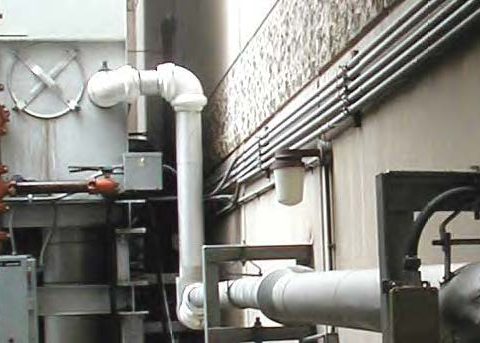Winter weather brings a host of risks and problems that must be managed properly. Besides the well know problems that can come from frozen pipes, icy sidewalks or snow and icicles on roofs, there is another often over-looked problem that increases in risk as temperatures plunge that can cause serious safety and health concerns for millions of people, clogging of heating oil fired furnaces. Fuel oil maintenance solutions can alleviate these problems.
The terms “waxing,” “gelling” and “freezing” all mean the same thing regarding fuel oil. When fuel oil drops to a certain temperature, it increases in viscosity and begins to solidify. However, when heating oil freezes, it doesn’t assume a solid state like ice. Instead, this mixture becomes thicker and gooier, form a sludge like consistency.
That sludge can affect heating system performance.
Who Uses Heating Oil?
According to the U.S. Energy Information Administration, (Use of heating oil – U.S. Energy Information Administration (EIA) In the winter of 2019–2020, about 5.5 million households in the United States used heating oil (distillate fuel oil) as their main space heating fuel, and about 81% of those households were in the U.S. Northeast census region.
In addition, Some commercial and institutional buildings use heating oil directly in space and water heating equipment and in combined heat and power plants. In Canada, up to 9% of households use fuel oil as their primary heat source. (Heating Systems & Energy Use in Canada | Infographic (furnaceprices.ca)
Fuel Oil Maintenance at Work
nVent offers a unique solution, based on nVent RAYCHEM XL-Trace Edge (CT) heating cables, for the efficient and environmentally responsible management of fuel oil viscosity. An nVent RAYCHEM fuel oil flow maintenance system keeps fuel oil at an ideal temperature for heating system performance offering no disruption to service.
Fuel oil heat tracing systems include specified heating cables, power connections, splices and tee connections, controls, and accessories necessary for a complete and economical solution. nVent RAYCHEM heat trace cables can be installed on metal or plastic pipes, can be wrapped around valves and other heat sinks and can be used for above ground or buried pipes.
A fuel line flow maintenance system is designed to maintain the fluid temperature to maintain flow. Typical applications include fuel lines that carry #2 fuel oil maintained at 4 °C / 40 °F, #6 fuel oil maintained at 43 °C / 110 °F or other fluids with viscosity that decreases sufficiently below 65 °C / 150 °F to enable flow.
Trace-Calc Pro for Buildings online design tool lets you create projects that can contain multiple applications, including fuel oil flow maintenance, multiple circuits, and multiple pipe segments with different design parameters on a single circuit.
If you are looking to learn more about a RAYCHEM System solution for your fuel oil line application please visit the nVent RAYCHEM website today.


